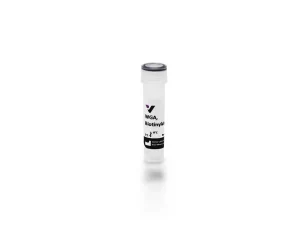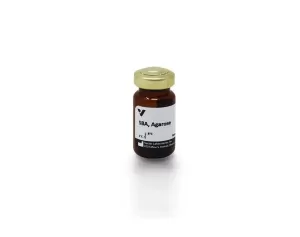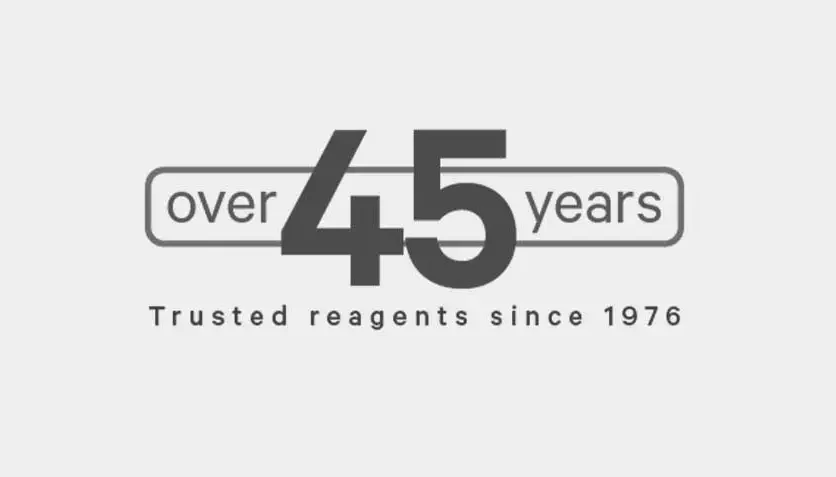Agarose bound PNA is prepared using our affinity-purified lectins. Peanut agglutinin binds preferentially to the T-antigen, a galactosyl (β-1,3) N-acetylgalactosamine structure present in many glycoconjugates such as M and N blood groups, gangliosides, and many other soluble and membrane-associated glycoproteins and glycolipids. With certain exceptions, the receptor sequence for PNA is normally sialylated which prevents the lectin from binding to its receptor oligosaccharide (see Jacalin). Even sialic acid which is not bound directly to the receptor sugars may inhibit binding. The presence of calcium ions in diluents can enhance the binding of PNA to receptors, possibly by neutralizing the negative charges on sialic acid residues adjacent to the receptor sequence.
| Unit Size | 2 ml, 5 ml |
|---|---|
| Applications | Glycobiology, Affinity Chromatography |
| Recommended Storage | 2-8 °C DO NOT FREEZE |
| Solution | 10 mM HEPES, pH 7.5, 0.15 M NaCl, 0.1 mM CaCl2, 20 mM galactose, 0.08% sodium azide |
| Recommended Usage | Wash gel thoroughly with buffer before use to remove sugar added to stabilize the lectin. Use of buffers containing 0.1 mM CaCl2 and 0.01 mM MnCl2 is recommended. Recommended product for eluting glycoconjugates bound to this agarose-lectin: Glycoprotein Eluting Solution, Cat. No. ES-2100. Alternatively, 200 mM galactose in 10 mM HEPES-buffered saline, pH 7.5 can be used.For those glycoconjugates having very high affinity for PNA, it may be necessary to lower the pH of the eluting sugar solution to pH 3.0 with acetic acid. After use, wash the gel with several column volumes of buffered saline, then resuspend gel in buffered saline containing 0.08% sodium azide for storage. |
| Matrix Conjugate | Lectins |
| Sugar Specificity | Galactose |
| Conjugate | Agarose |
Our agarose lectin products are supplied as hydrated matrix solutions in amber glass bottles. The agarose (bead) material will settle and you will see two phases in the tube supplied. The upper phase is buffer. A column can be prepared in a commercial plastic device such as Bio-Rad Cat # 732-6008 or an inverted Pasteur pipet with glass wool lightly packed in the neck to retain the agarose. 1) Draw (pipet) the desired amount of settled agarose-lectin (gel) from the stock bottle into the prepared column and let the buffer drain by gravity.(Sometimes an air bubble in the column tip prevents flow; tapping the column should get the flow started). 2) Wash the gel with 10 column volumes of buffer, such as HBS (10 mM HEPES, 0.15 M NaCl, pH 7.5) and discard the flow through. 3) Place a collection vessel (e.g. glass test tube) under the column tip and apply the glycoprotein-containing solution.Allow the solution to drain through using gravity. We recommend against pushing or pulling the material through the column. Retain the flow through material until the desired binding has been confirmed. 4) After sample application, wash column with 2-3 column volumes of buffer (or until the absorbance at 280nm is reduced to a satisfactory level) to remove unbound materials before elution. 5) Place a fresh collection vessel under the column tip.Apply the eluting solution again letting gravity do the work of moving the solution over the column. Note that in some cases, several column volumes of eluting solution may be required to achieved adequate release of bound material. 6) Following elution, the column can be prepared for reuse by washing with 10 column volumes of buffer. 7) If the column is to be stored, equilibrate the column with buffer containing 0.08% sodium azide. Cover the column with a plastic wrap, or similar, to prevent desiccation and keep at 4 degrees Celsius. The column will be stable for many months when stored under these conditions.
The pH should be near neutral, the maximum pressure for packing the resin is 10 psi, and the maximum flow rate 3.5 ml/min.
PNA is useful in distinguishing between normal and tumor tissues and in assessing malignancy in transitional mucosa. In addition, PNA binding can be used to measure cellular maturity in lymphoid tissues, to distinguish a variety of lymphocyte subpopulations in man and experimental animals, and to measure the levels of lymphoid cell populations in many diseases. PNA can be employed in the fractionation of stem cells in mice for use in bone marrow transplantation across histocompatibility barriers.
A major cell surface receptor for PNA may be asialo GM1 ganglioside. Since PNA shares specificity with the antibody to this glycolipid, PNA and the antibody can be used interchangeably in some applications.
Agarose bound* PNA is prepared using our affinity-purified lectins. Heat stable, cross-linked 4% agarose beads with a molecular weight exclusion limit of about 2×107 daltons are used as the solid-phase matrix to which the lectins are covalently coupled. The attachment of the lectins to the beads is carefully controlled to preserve lectin activity and minimize conformational changes of the bound lectins that might result in nonspecific ionic or hydrophobic interactions. The technique we have developed to couple lectins to agarose beads inserts a hydrophilic spacer arm between the lectin and the matrix.
This coupling method provides several advantages over the traditional cyanogen bromide procedure:
Our agarose bound lectins are supplied at a constant concentration of lectin per ml of settled beads. The concentration for each lectin is selected to achieve the highest glycoconjugate binding capacity per mg of lectin present in the beads. Each lot is tested for its binding capacity using glycoproteins known to bind the lectin. This provides a guideline for the user and assures the quality of our agarose bound lectins.
*5 mg lectin/ml gel
Applicable patents and legal notices are available at legal notices.




Stay in the Loop. Join Our Online Community
Products
Ordering
About Us
Application
Resources

©Vector Laboratories, Inc. 2025 All Rights Reserved.
To provide the best experiences, we use technologies like cookies to store and/or access device information. Consenting to these technologies will allow us to process data such as browsing behavior or unique IDs on this site. Not consenting or withdrawing consent, may adversely affect certain features and functions. Privacy Statement
How do I Request a Quote?
To request a quote for products: